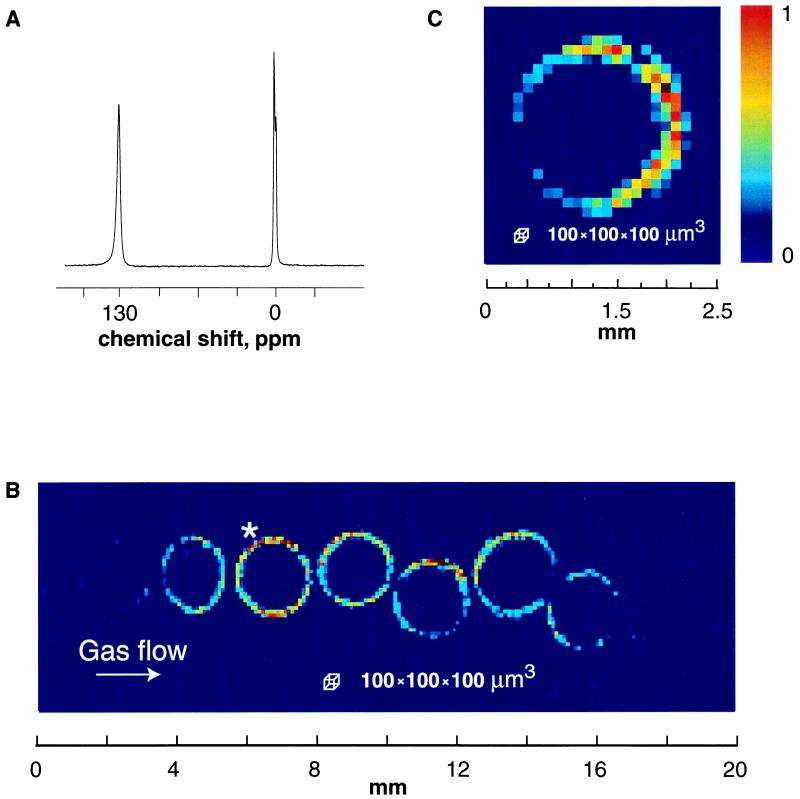Figure 3.
(A) NMR spectrum of laser-polarized xenon flowing through spherical particles of 13× zeolites (T = 290 K). Xenon occluded within the zeolite gives rise to a signal at 130 ppm, referenced to bulk phase xenon gas at 0 ppm (1 atm of Xe and 1 atm of N2). (B) Magnetic resonance 2D image: longitudinal slice (along the direction of flow) from a full 3D data set for xenon occluded in zeolite particles. The 3D data with a resolution of 100 μm in all three dimensions (64 × 64 × 256 points) are Fourier-transformed with no zero-filling or smoothing filters. Spin-lattice relaxation reduces the polarization of xenon before the pellet is saturated completely with laser-polarized 129Xe. The asymmetric intensity of spin density in the pellets reflects close contact of neighboring particles, which interferes with the efficient flow and accessibility of polarized gas to the particles. (C) Magnetic resonance 2D image: transverse slice (perpendicular to the direction of flow) from a full 3D data set as described for B. The asterisk in B indicates which particle is depicted in the slice. The low signal intensity on the left-hand side of the particle is caused by its close proximity to the glass walls of the container, which interferes with the flow accessibility of polarized gas.

